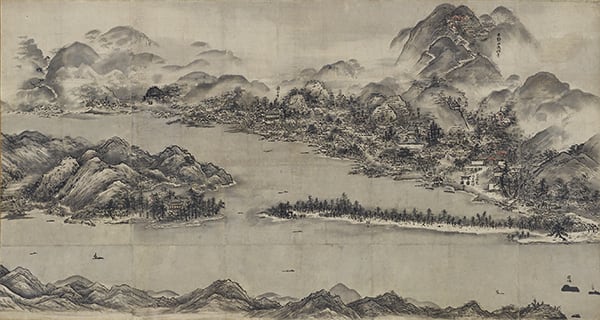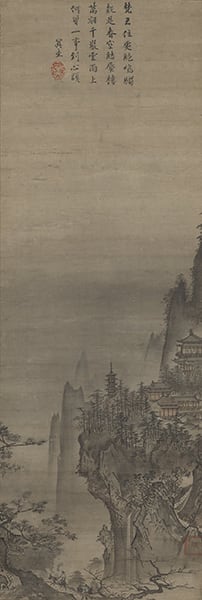- TOP
- Learn
- Learning Resources
- Museum Dictionary
- Painting Stories
- Sesshu Paints a Mouse with His Tears
Sesshu Paints a Mouse with His Tears
Text by Hideo Yamamoto, Curator, Kyoto National Museum
(Issued on October 10, 1998)
Have you heard of the painter Sesshu (1420–1506?) I don’t think very many people would immediately be able to reply,“He's a famous ink painter (J., suiboku gaka), who was active in Japan during the Muromachi period (1333-1573).”Much less do most people know that he was the artist of celebrated Japanese masterworks such as Amanohashidate (National Treasure, Kyoto National Museum)
and Autumn and Winter Landscapes (National Treasure, Tokyo National Museum). But if we asked an older Japanese person if they know who Sesshu was, most of them would have at least heard of his name. Well, I have never actually asked this question so I don’t know for sure, but in the past, stories of Sesshu's childhood appeared in Japanese language books.
One famous story takes place in a Zen temple called Hofuku-ji in what is now Soja City in Okayama Prefecture. The young Sesshu entered the temple as a child to become a Zen monk, but he is said to have ignored his training and instead spent his days on his favorite activity, painting. One morning, the head priest, who became angry at him, tied him to a pillar in the temple. But after a while, the priest felt a bit sorry for Sesshu, so he peeked into the temple, where he saw a big mouse moving around the boy's feet. Thinking it would be terrible if Sesshu were bitten by the mouse, the priest tried to chase the mouse away, but oddly enough, the mouse showed no signs of running away. This was because the mouse was not a real mouse, but one that Sesshu drew in the alcove with his tears as paint and his big toe as a brush. At first glance, the priest thought the mouse was moving because it was painted so realistically, as if it were alive. From then on, the priest never admonished Sesshu for painting.
This story first appeared in a book called Honchogashi (a biographic record of Japanese painters), which was compiled in the early Edo period (1615-1868) by the painter Kano Eino (1631-1697). The story must have already been quite well known that it came to be included in this book. However, if you're asking whether or not this story about the mouse painted with tears is true, unfortunately, the answer would be no. Let's think about it. No matter how skilled one is at painting, there is no way one could paint a mouse so realistically with their tears—much less using their foot—that it would look as if it were moving around. The idea that a great artist like Sesshu must have demonstrated amazing skill even in his youth perhaps gave rise to a story like this.
In this way, the story of how Sesshu painted a mouse with his tears is merely fiction. But, as I explained, many older Japanese know the name Sesshu because of this anecdote. In this respect, this fictional story made Sesshu's name incredibly popular and perhaps contributed to his fame. Moreover, because its contents deal with Sesshu's childhood, one can imagine him as a cute little monk—comparable to the famous young Zen monk Ikkyu (though the young Sesshu may not have had his head shaven at that point yet). Although he is considered to be a great artist, unlike other famous painters, perhaps there is a sense of familiarity towards him because of this.
Let's take a look at View of Amanohashidate (National Treasure, Kyoto National Museum), which Sesshu painted towards the end of his life, and Landscape with Pavilions (Important Cultural Property, Kyoto National Museum), which he painted in his earlier years when he went by the name Sesso (or pronounced Sesshu with different characters).
For those of you who are used to looking at Western paintings of scenic landscapes, these paintings may seem a bit strange but try to imagine Sesshu as a young priest working on them. Perhaps they may suddenly seem familiar.
- Previous
- Back to Painting Stories
- Next








